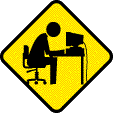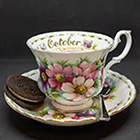When should I use HTML Symbols? -...
When should I use HTML symbols and when not to use them? Should I be using HTML Symbols for periods? When are they appropriate to use?
I cannot seem to find any proper reading material on these guide lines.
Thanks,
Jason Arroyo
I cannot seem to find any proper reading material on these guide lines.
Thanks,
Jason Arroyo
Periods, !, ? are fine and ' are fine. Everything else I use symbols on. 
"An Apple doth not fall far from its tree, yet an orange does."
https://lbwebsitedesign.com - Responsive Web Design & Web Hosting Services.
http://helpsite.sirage.com - HTML5, CSS3 and CC Help Video Blog.
https://lbwebsitedesign.com - Responsive Web Design & Web Hosting Services.
http://helpsite.sirage.com - HTML5, CSS3 and CC Help Video Blog.
When you are using < and > as part of the markup, you use them as they come, but if you want them visible on your site, you'll have to use symbols (< and >)
Ha en riktig god dag!
Inger, Norway
My work in progress:
Components for Site Designer and the HTML Editor: https://mock-up.coffeecup.com
Inger, Norway
My work in progress:
Components for Site Designer and the HTML Editor: https://mock-up.coffeecup.com
Yes you should always use the actual punctuation when completing coding. . 
"An Apple doth not fall far from its tree, yet an orange does."
https://lbwebsitedesign.com - Responsive Web Design & Web Hosting Services.
http://helpsite.sirage.com - HTML5, CSS3 and CC Help Video Blog.
https://lbwebsitedesign.com - Responsive Web Design & Web Hosting Services.
http://helpsite.sirage.com - HTML5, CSS3 and CC Help Video Blog.
Thank you, guys. I really appreciate the feedback!
regular quotation marks are fine to " " but don't use the fancy ones, those will raise errors.
Thanks, Jo Ann!
What others are trying to say here, and what I think you are asking, fall into two things.
There are markup tags, the code. Then there is the text and other things you're marking up.
The HTML, CSS, JavaScript, PHP, any SVG, and so on all use the standard typewriter letters, numbers, and symbols found on your keyboard's key caps, the old ASCII lower 128 characters.
You use < and > and & and " and ' and \ and all the rest like normal in your code. If/when you need to include certain characters, the straight ' and " quote marks and the backslash \ inside the attribute for an element, or inside a bit of JavaScript in quotes, then you "escape" the quote marks or backslash like so: \' \" \\ because this is a convention of JavaScript strings, and from the C language that is a relative (ancestor or cousin) of JavaScript. The backslash has a special meaning and usage there.
The reason <, >, &, ', and " are special is because these are special characters for HTML and SGML themselves. You use those for the markup (code) and the HTML character entities < > & ' " in the text (the regular, readable text you're marking up). Note that semi-colon (";") is part of the character entity. You have to include it too.
In the regular text you're marking up, Those same special characters from the paragraph above need to be character entities < > etc. or they will confuse the HTML display. Because your web pages may be viewed on Windows, Macintosh, Linux, iOS, Android, or whatever else in the future, any special symbols like curly quotes ‘ ’ “ ” and dashes — and accented letters é and so on, need to be those HTML entities too. Or else your meta charset tag *and* the file's Save As format need to be set properly to the UTF-8 or other character set you need, in order to display properly. Hint: If you see two strange symbols in a row, instead of the proper/intended character, it's a tip the encoding is off. This happens to anyone, big sites or little. For foreign language text, especially non-European or non-Latin alphabets, you'll really need the charset to be right, because wading through a bunch of ' (and &#dddd; whatever) is really not going to make anyone happy.
There are markup tags, the code. Then there is the text and other things you're marking up.
The HTML, CSS, JavaScript, PHP, any SVG, and so on all use the standard typewriter letters, numbers, and symbols found on your keyboard's key caps, the old ASCII lower 128 characters.
You use < and > and & and " and ' and \ and all the rest like normal in your code. If/when you need to include certain characters, the straight ' and " quote marks and the backslash \ inside the attribute for an element, or inside a bit of JavaScript in quotes, then you "escape" the quote marks or backslash like so: \' \" \\ because this is a convention of JavaScript strings, and from the C language that is a relative (ancestor or cousin) of JavaScript. The backslash has a special meaning and usage there.
The reason <, >, &, ', and " are special is because these are special characters for HTML and SGML themselves. You use those for the markup (code) and the HTML character entities < > & ' " in the text (the regular, readable text you're marking up). Note that semi-colon (";") is part of the character entity. You have to include it too.
In the regular text you're marking up, Those same special characters from the paragraph above need to be character entities < > etc. or they will confuse the HTML display. Because your web pages may be viewed on Windows, Macintosh, Linux, iOS, Android, or whatever else in the future, any special symbols like curly quotes ‘ ’ “ ” and dashes — and accented letters é and so on, need to be those HTML entities too. Or else your meta charset tag *and* the file's Save As format need to be set properly to the UTF-8 or other character set you need, in order to display properly. Hint: If you see two strange symbols in a row, instead of the proper/intended character, it's a tip the encoding is off. This happens to anyone, big sites or little. For foreign language text, especially non-European or non-Latin alphabets, you'll really need the charset to be right, because wading through a bunch of ' (and &#dddd; whatever) is really not going to make anyone happy.
http://www.shinyfiction.com/
Writing, Editing, Artwork, Audio, and soon Fonts
Writing, Editing, Artwork, Audio, and soon Fonts
Have something to add? We’d love to hear it!
You must have an account to participate. Please Sign In Here, then join the conversation.




